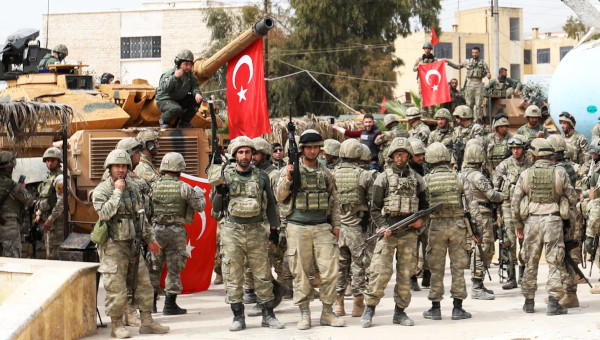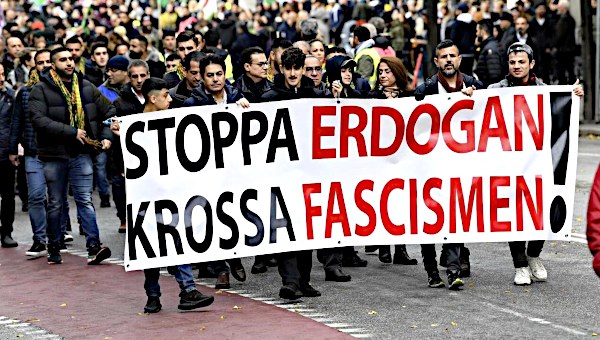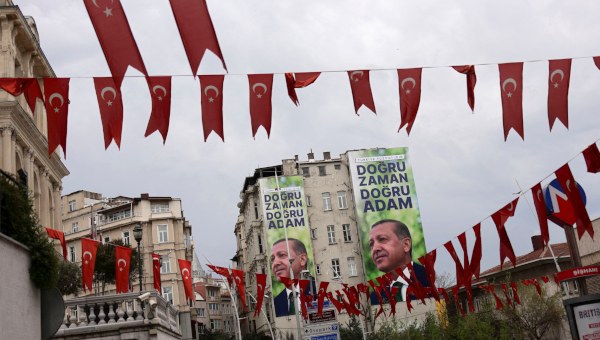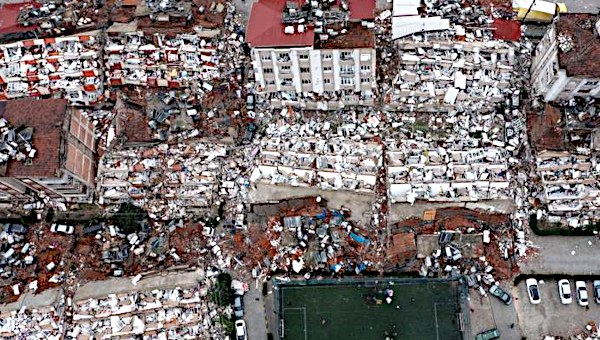After the people’s revolt last summer, after the immense crisis of the state caused by the breakup of the Islamic power bloc in December 2013, after the local elections that gave a new lease on life to Prime Minister Recep Erdogan and his AKP government, May Day in Istanbul became a battle ground between the government forces, on the one hand, and the vanguard of the working-class and the forces of the left, on the other.
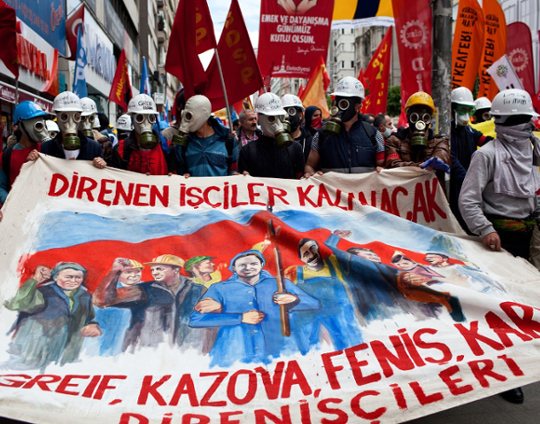
May Day Tradition
The military dictatorship of the 1980s was successful in closing the square to left-wing demonstrations (while all other kinds of demonstrations, ranging from sports celebrations to Islamist and fascist rallies were tolerated, if unofficially). The supposedly
democratic governments of the 1990s and the early 2000s took this practice over as a “gain,” so to speak, of the ruling classes and continued to apply the same ban. Starting from 2007, the 30th anniversary of the 1997 May Day massacre, the advanced sections of
the working-class turned their gaze once again to Taksim. On May Day 2008 and 2009 there were pitched battles in the whole area around
Taksim, as we were trying to enter the square while the police were adamant in banning the square. 2010 brought a small victory to the
workers’ and socialist movement, when both due to stepped up pressure and its search for additional support for the constitutional
referendum that was going to take place that autumn, the government declared May Day a national holiday and opened Taksim square for celebrations. Three years of jubilant celebrations followed. These were occasions during which hundreds of thousands came together,
including the more backward elements of the trade union movement, in a festive mood but in an atmosphere of reconciliation to the government and to capitalism.
Then came 2013, again a turning point. This occasion was in effect the prelude to the Gezi Park events and the people’s revolt. Citing the
fact that Taksim square was a construction ground due to the overhaul as a result of the plans geared to turning the park, adjacent to the
square itself, into a shopping mall, the government banned Taksim for demonstrations once again. We battled but lost. However, as everyone
knows, only a month later, on the night of 31 May 2013, under the unstoppable pressure of a mass people’s rebellion, the government
had to withdraw the police and leave the whole square and Gezi Park to the movement. We all settled there, established a tent city,
formed the Gezi Commune, so to speak, and kept the police out for a fortnight. That was the heyday of the people’s rebellion, popularly known internationally as the Gezi movement.
The Ghosts of Gezi Visit Erdogan
This year there was no construction on the square. But the phantom of the people’s rebellion is still hovering over Turkey! Erdogan was
thrice defeated by the Gezi rebellion. Locally, i.e. at the level of Istanbul because he had to waiver his plans to totally restructure
Taksim square by building a shopping mall in place of the Gezi Park and a mosque nearby (which would have been a great symbolic move in
representing the liberal Islamism of the AKP). Nationally, because he had to drop his plans to overhaul the constitution, turning the traditional parliamentary system of Turkey into a presidential or
semi-presidential one and then climb to the presidency himself. (He may still become the president of the republic, not the president in
the U.S. sense, but with much more limited powers than he was dreaming of.) Internationally, because one of the major moving forces of the people’s rebellion being the Alevi minority, whose brethren are
under threat of massacres in Syria from the Sunni fundamentalists supported by Erdogan, the AKP government had to forego any plans it may have had for kindling war with Syria.
The people’s rebellion was also the ground out of which grew the tumultuous rift in the Islamist power bloc moulded in the early
2000s, out of which came the AKP government with its reign now running into its 12th year. The imam Fethullah Gulen and his community scandalously
abandoned Erdogan, using the clout in the police and the judiciary they had been granted by the self-same Erdogan to expose the utter corruption into which the AKP government had sunk during its years in power.
So Erdogan fears a re-edition of the Gezi people’s rebellion as the plague. This is why he declared on the eve of May Day this year that
Taksim was banned forever. All demonstrations were to be held in a strip of land that has been added to the cityscape as a result of the
filling in of the sea. This is a place in the middle of nowhere, where the masses can only touch the hearts of the legendary seagulls of Istanbul and chant toward the beautiful Princess Islands!

Naturally, the workers’ and socialist movements did not relent. The result was a prolonged battle around Taksim square that lasted for hours and
hours and extended not only into rather distant working-class neighbourhoods, but also into the posh bourgeois areas north of the city.
Notwithstanding the fact that we were not able to take Taksim we are all happy, knowing that we have done our duty and will certainly gather the fruits of this struggle in due time. Let no one forget the following
fact: on May Day 2013 it was the police who kept us outside of Taksim square. A tactical victory for them and a tactical defeat for us. On the 1st of June 2013, a month later to the day, it was us who had kicked out
the police form that very square. A tactical victory for us and a tactical defeat for them, one would symmetrically, but deceptively be
inclined to say. No, a strategically important defeat for the police, the AKP and Erdogan. For some time to come, nothing will ever be the same in the class struggle in Turkey. This was demonstrated, if need
be, once again today. Whereas last year the resistance put up by the movement was much weaker and meeker, this year the whole movement fought much more courageously and much more numerously.
It is the working-class and its vanguard that will overcome eventually! •


